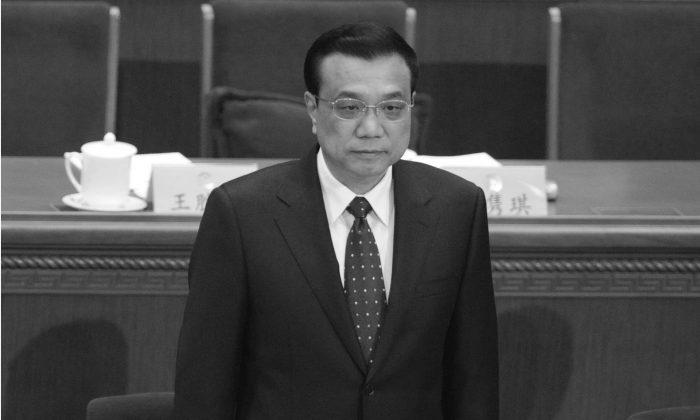Wouldn’t it all be great? Less pollution. More money for consumers to spend. A quiet end to rampant real estate speculation, and relatively fast GDP growth.
There is only one problem: The goals set by Chinese Premier Li Keqiang in his speech Wednesday before the National People’s Congress (NPC) cannot be achieved, because they go against the laws of economics and human nature.
Of course, the problems with Keqiang’s ambitious plans are all interrelated and the solutions mostly mutually contradictory. The one thing they have in common is a chronically uncompetitive economy that stifles innovation and productivity.
Consumption
Let’s start with consumption. Chinese leaders have always talked about boosting consumption, whereas its share of GDP has declined from 47 percent in 1990 to 34 percent in 2011. If everything went according to plan, it would be above 60 percent by 2030.
But if you want people to spend more, they have to earn more money. Wages have risen considerably over recent years, but still don’t reflect the actual value created by the Chinese labor force. Most of this value is captured by corrupt oligarchs and officials.
If wages were to rise to levels that would enable the broad masses to spend with force China would become a problem with growth. Chinese companies are already notoriously uncompetitive in world markets, because they lack the know-how and innovation to drive true increases in productivity.
A cheap currency, cheap land, cheap labor, and cheap credit laid the foundation of China’s rapid growth over the last three decades. But not only are none of them as cheap as before, they also don’t work to drive a knowledge-based economy.
Significantly higher wages would bankrupt many employers in the private sector before increased income would boost aggregate demand. And one thing is for certain, people who don’t have jobs, don’t consume much.
The second problem with consumption is that Chinese people are forced to save most of their income, because there is no social security system. This is not a very popular topic in Beijing, hence not prominently featured in Keqiang’s speech.
Natural Destruction
Then let’s talk about the 3.8 percent of GDP in irreversible environmental destruction that China itself estimated in 2009, before hushing up and discontinuing the report.
As many companies in the West know very well, you have to pay dearly for a greener economy. Long term, the benefits outweigh the costs, but the near-term expense is huge.
Again, Chinese companies are in no shape to afford the costs of even a relatively greener economy, because they are so inefficient, not very profitable, and in debt to the tune of 150 percent of GDP.
To grasp the aggregate inefficiency with which the Chinese economy operates, we can have a look at commodity consumption.
In 2010, Chinese GDP made up 9.1 percent of the world economy (today it’s 13 percent). However, the economy used 37.4 percent of the world’s copper, 42.1 percent of the aluminum, 57 percent of the cement, and 42.4 percent of world’s steel, according to Bank of America.
Virtually all other countries build more with less, and it will cost a high price to get Chinese companies up to par, if that is possible at all.
Growth and Credit
Last but not least, forget about reducing real estate speculation without causing a terminal wind-down in the economy’s credit machine.
The Chinese economic miracle was always based on printing money and creating credit. But when growth started sputtering in 2008, the central planners went on an unprecedented credit binge that expanded the whole banking system by $15.4 trillion or 140 percent of GDP. As a comparison, total bank credit in the United States grew by $2.1 trillion and is less than 100 percent of GDP.
As usual, real estate was the most preferred collateral for creating the loans that underpin the credit expansion, which sent prices on a tear. Because this model worked so well—new development projects equal GDP growth—it soon didn’t matter that nobody was going to use the newly created living space anymore. So ghost cities such as Ordos in Inner Mongolia came to be and vacancy rates are as high as 30 percent. Real estate in China is mostly just speculation.
If you pop the bubble, however, and stifle this speculation, you turn exponential credit growth—and therefore GDP growth—into exponential credit compression, similar to what happened with U.S. subprime. So instead of reforms, the only thing left for Beijing to do is kick the can. Until they run out of road.






Friends Read Free